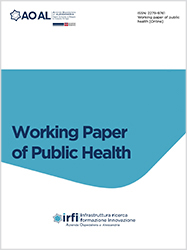Assessment of the adequacy of bowel preparation in patients undergoing colonoscopy: a retrospective study
All claims expressed in this article are solely those of the authors and do not necessarily represent those of their affiliated organizations, or those of the publisher, the editors and the reviewers. Any product that may be evaluated in this article or claim that may be made by its manufacturer is not guaranteed or endorsed by the publisher.
Authors
Background: a colonoscopy is crucial for detecting Colorectal Cancer (CRC), and its success is reliant on various fac- tors, notably colon cleansing. Investigating the frequency of procedure interruptions due to inadequate bowel prepara- tion and associated predictive factors could inform targeted interventions. This study aimed to retrospectively assess inadequate bowel preparation rates in outpatient and inpatient settings. Materials and Methods: this observational, retrospective, and single-center study examines patient records from a sin- gle hospital in northern Italy. This investigation involves individuals who underwent colonoscopies from January 1, 2021, to December 31, 2021, regardless of whether they were receiving outpatient or inpatient care. Results: this study included 1977 participants. The median age of all participants was 64 years, with ages ranging from 41 to 86. Among males, the median age was 65 years, varying from 56 to 74, whereas for females, it was 64 years, rang- ing from 55 to 74. The majority (78.7%) of participants came from their homes. The type of product used for colon preparation was evaluated in 1783 patients: 92% of them used an osmotic action product (55.7% high volume, 36.3% low volume). The adequacy of the colon preparation for the procedure, assessed using the Boston Bowel Preparation Scale, was found to be poor (score≤5) for 24.2% of the participants, with 13.5% scoring 0. Conclusions: the study suggests healthcare providers should enhance patient education for colonoscopy preparation, especially focusing on hospitalized patients with higher rates of inadequate preparation. Strategies should align with guidelines but also prioritize personalized approaches.
How to Cite

This work is licensed under a Creative Commons Attribution-NonCommercial 4.0 International License.







